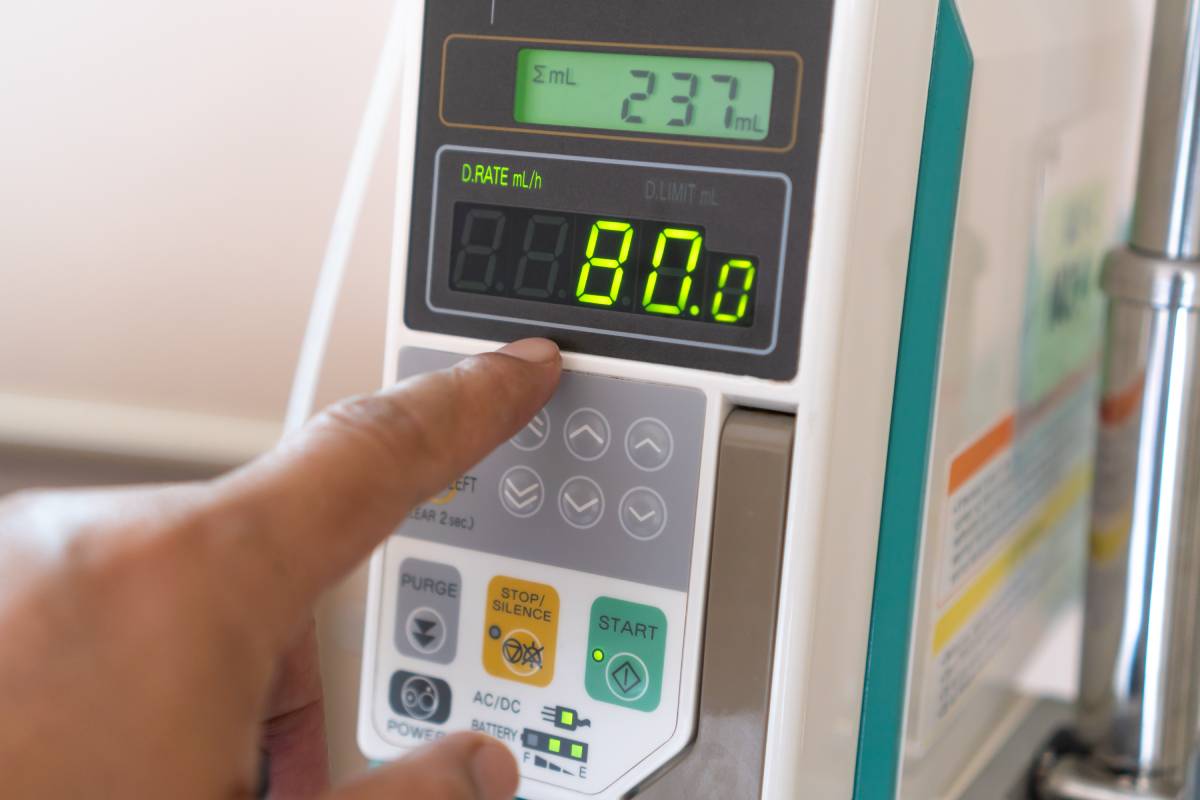Programmed Intermittent Epidural Boluses (PIEB) is a recent, innovative approach to pain management, particularly in obstetric and surgical settings. This technique delivers epidural analgesia by administering intermittent boluses of local anesthetic and opioid solutions via an indwelling catheter at predetermined, programmed intervals. Some research has found that PIEB offers superior pain relief, reduced side effects, and improved patient satisfaction compared to traditional continuous epidural infusions.
Programmed Intermittent Epidural Boluses may offer several benefits 1. First, by delivering medication in intermittent boluses, some research suggests that PIEB provides more consistent analgesia compared to continuous infusions. Second, studies have demonstrated that PIEB protocols require lower total doses of local anesthetics and opioids compared to continuous infusion techniques, thereby reducing the risk of adverse effects such as motor blockade and hypotension. Third, the precise and predictable nature of PIEB allows patients to experience more stable pain control with fewer breakthrough episodes, resulting in higher satisfaction scores and improved overall experience during labor, surgery, or postoperative recovery.
Programmed Intermittent Epidural Boluses has garnered particular interest in obstetric anesthesia, where effective pain management during labor is essential for maternal comfort and well-being 2,3. Studies have shown that PIEB offers superior analgesia compared to traditional continuous epidural infusions, with fewer interventions for inadequate pain relief and decreased requirements for supplemental analgesia methods such as patient-controlled epidural analgesia. By optimizing pain control while minimizing side effects, PIEB may contribute to faster postoperative recovery, reduced opioid consumption, and shorter hospital stays.
Implementing PIEB requires careful consideration of several factors 5–7. Accurate placement of the epidural catheter is necessary to effectively deliver drugs and minimize the risk of complications such as inadvertent intravascular injection or dural puncture. Clinicians also must carefully select PIEB infusion parameters, including bolus volume, concentration, and interval, based on individual patient characteristics, surgical requirements, and analgesic goals. Continuous monitoring of patients receiving PIEB is essential to promptly identify any adverse effects like local anesthetic toxicity, respiratory depression, or hemodynamic instability. Additionally, continuous infusions may lead to the uneven distribution of medication and variations in analgesic efficacy. By programming the pump to administer boluses at specified intervals, clinicians can maintain optimal pain relief while minimizing the risk of systemic toxicity and motor block. Healthcare providers should receive adequate training and education on PIEB protocols, including pump programming, troubleshooting, and management of potential complications.
Programmed Intermittent Epidural Boluses offers an additional tool for analgesia in labor and surgery. By harnessing the benefits of intermittent drug delivery, PIEB techniques may be able to improve patient outcomes and satisfaction while minimizing side effects and resource utilization.
References
1. Wang, X. X. et al. Programmed intermittent epidural bolus in parturients: A meta-analysis of randomized controlled trials. Medicine (Baltimore). 101, E28742 (2022). doi: 10.1097/MD.0000000000028742
2. Fidkowski, C. W., Shah, S. & Alsaden, M. R. Programmed intermittent epidural bolus as compared to continuous epidural infusion for the maintenance of labor analgesia: a prospective randomized single-blinded controlled trial. Korean J. Anesthesiol. 72, 472 (2019). doi: 10.4097/kja.19156
3. Xu, J. et al. A Systematic Review and Meta-Analysis Comparing Programmed Intermittent Bolus and Continuous Infusion as the Background Infusion for Parturient-Controlled Epidural Analgesia. Sci. Reports 2019 91 9, 1–11 (2019). doi: 10.1038/s41598-019-39248-5
4. Satomi, S. et al. The Efficacy of Programmed Intermittent Epidural Bolus for Postoperative Analgesia after Open Gynecological Surgery: A Randomized Double-Blinded Study. Biomed Res. Int. (2018). doi:10.1155/2018/6297247
5. Ran, X., Zhou, S., Cao, K. & He, P. Optimization of programmed intermittent epidural bolus volume for different concentrations of ropivacaine in labor analgesia: a biased coin up-and-down sequential allocation trial. BMC Pregnancy Childbirth 22, 1–8 (2022).
6. Zakus, P. et al. Determination of the optimal programmed intermittent epidural bolus volume of bupivacaine 0.0625% with fentanyl 2 μg.ml −1 at a fixed interval of forty minutes: a biased coin up-and-down sequential allocation trial. Anaesthesia (2018). doi:10.1111/anae.14159
7. Liu, S. K. et al. Combined Programmed Intermittent Bolus and Patient-Controlled Bolus Is a More Favorable Setting for Epidural Pain Relief Than Continuous Infusion. Healthc. (2023). doi:10.3390/healthcare11091350
